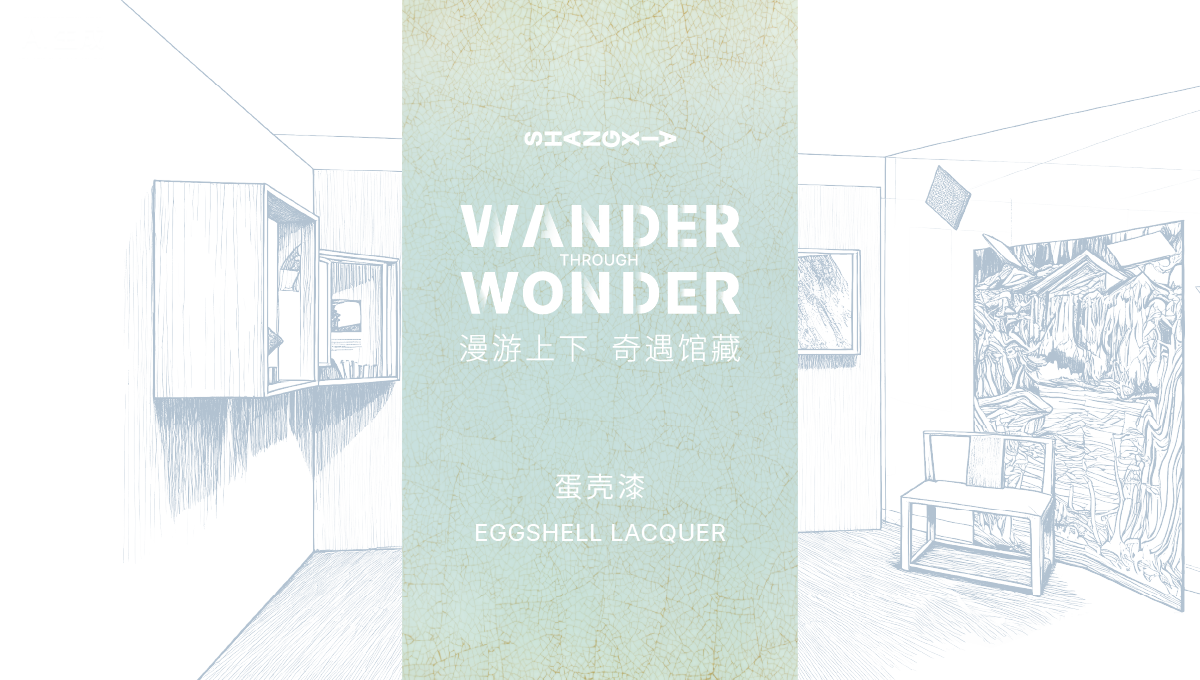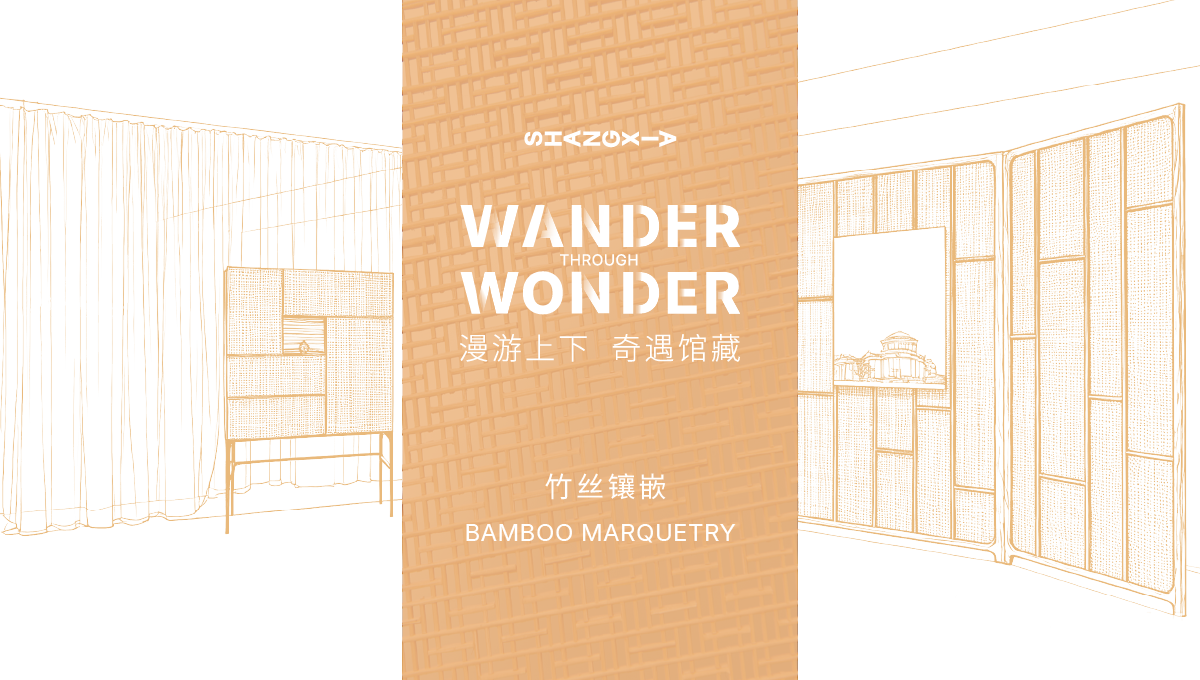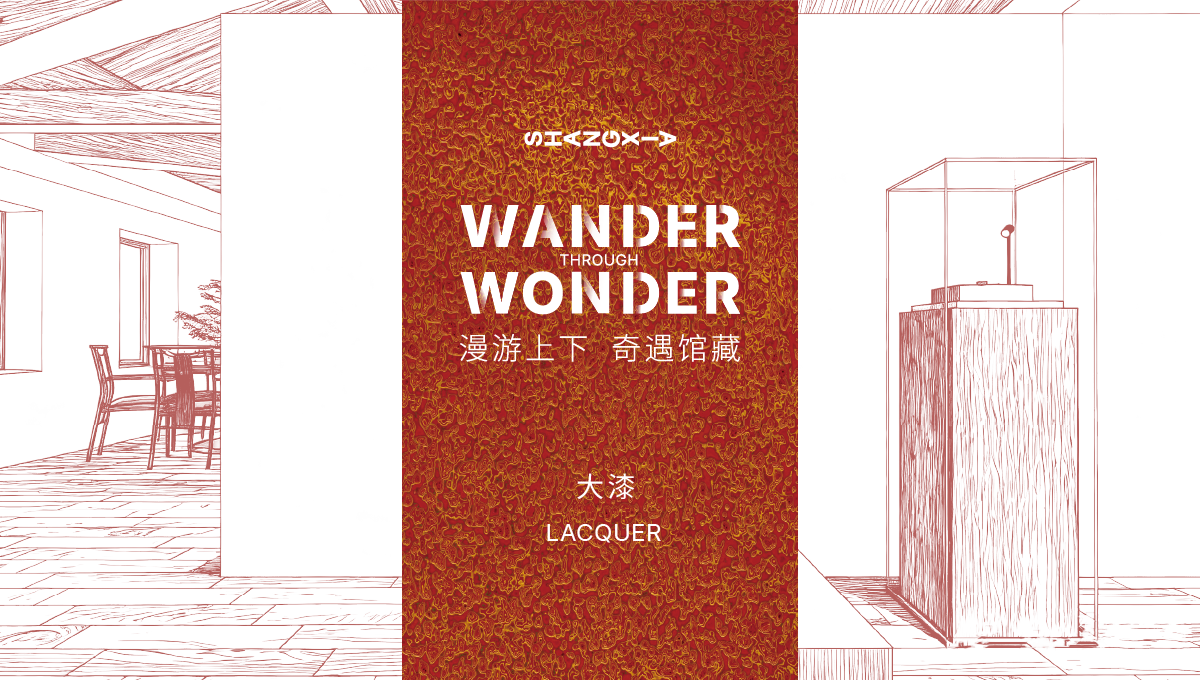The Flowing Beauty of a Millennium
Xipi Lacquer stands as one of the most mystical and magnificent forms of traditional Chinese lacquerware. Its name comes from its flowing, layered texture, which closely resembles the folded skin of a rhinoceros.
The history of Xipi Lacquer can be traced back to the Three Kingdoms period. Lacquerware excavated from the tomb of Zhu Ran in Ma'anshan, Anhui Province, China, has been identified by archaeologists as the earliest known physical example of Xipi Lacquer, dating back over 1,800 years. Throughout its millennia-long history, the craft has experienced periods of prominence and decline, even nearing extinction. Thanks to the persistent research and revival efforts of contemporary artisans, this exquisite technique has been successfully reintroduced to the modern world.



Layered Waves of Time
The art of Xipi Lacquer is a dialogue with time. Artisans repeatedly apply natural lacquer, each layer a patient accumulation of days.
Together with Lacquer Master Gan Erke (an inheritor of Lacquer Art - a National Intangible Cultural Heritage), SHANG XIA breathes new life into this 1,800-year-old craftsmanship. Through innovation rooted in tradition, we bring this legacy to the world. Step into these layered ripples of time and feel the vibrant pulse of Eastern aesthetics.
A Polished Miracle
The mystery of Xipi Lacquer lies in the meticulous cycle of "layering colors" and "revealing through polishing."
Artisans first apply layers of differently colored lacquer onto an uneven base. Each layer is left to solidify in a humidification chamber, awaiting the next application. When the layers have built up sufficiently, the true magic begins. Through precise sanding, the concealed colors are gradually uncovered. What were once parallel layers, when sanded over the contoured base, reveal themselves as flowing, endless patterns.
The foundation of all this is natural lacquer, sourced from the lacquer tree. This material, unique to the East, not only gives the object its warm luster but also, with its resistance to decay and wear, protects it through millennia.
1. Mold Formation
Following ancient methods, ramie cloth is applied to the body base. Raw lacquer is brushed on, followed by five to six layers of a paste made from raw lacquer and ancient tile dust. This process gradually builds the precise form of the vessel.

2. Texture Building
Thick, colored lacquer is dotted onto the surface to create raised patterns. This forms the foundational texture for the final design and is a step of exceptionally high technical difficulty.

3. Layering the Lacquer
The body with raised patterns is dried in a humidity-controlled chamber for about a month. Afterwards, different colored lacquers are applied layer by layer. Each layer requires returning to the chamber to dry completely, a process highly sensitive to temperature and humidity. This step alone can take several months for a single piece.

4. Sanding
Once the lacquer surface is fully cured, the polishing begins. The areas around the initially raised dots, now surrounded by countless colored layers, are gradually ground down to reveal the natural, ripple-like texture.

5. Hand Polishing
After the piece is ground smooth, the final polishing is done by hand. This step tests the artisan's touch, requiring perfect control of pressure and speed to draw out the object's subtle, inherent luster. Any deviation can affect the final sheen.

Where Lacquer Flows: A Contemporary Ode
When the millennium-old art of Xipi Lacquer meets modern aesthetics, this ancient craft finds new life in contemporary living.
Through the visionary interpretation of SHANG XIA, this traditional technique is transformed into elegant accessories that grace dinner gatherings, into exquisite lacquer boxes that gather and hold beauty, and even into tea tables with serenity. Xipi Lacquer is not merely a flowing poem that adorns daily life; it is a treasured art piece that transcends time, showcasing its unique Chinese resonance in world-class museums.

Ru Yi Collection Xipi Lacquer Clutch Hand Bag, Black and Gold
The red and gold edition was permanently collected by The Victoria and Albert Museum in 2021

Garden Collection Xipi Lacquer Round Box, Black and Gold
The red and gold edition was collected permanently by British Museum in 2017
The red and gold edition was collected permanently by Musée National des Arts Asiatiques-Guimet in 2016

Da Tian Di Collection Xipi Lacquer Carbon Fiber Table, Black and Gold
The brown and gold edition was collected permanently by Musée des Art Décoratifs in 2016
From Fragments to Treasures
Hands-on touch, fingertips aglow—witness how ordinary eggshells bloom into a landscape of crackled patterns. At SHANG XIA, experience the aesthetic miracle born from everyday objects.
Learn MoreInlayed into Beams of Light
A Qing Dynasty courtly craft, enduring and ever-renewed. With tweezers as the brush, short bamboo strands become strokes of ink. Patiently inlaid, piece by piece, they merge into form—continuing the luminous legacy of intangible cultural heritage.
探索更多Layered Waves of Time
Having weathered rises and falls across millennia of history. Lacquer is an artistic collaboration between human hands and time. Awaiting collective polishing by many hands, uncover the brilliance sealed within its layered depths.
Learn More

